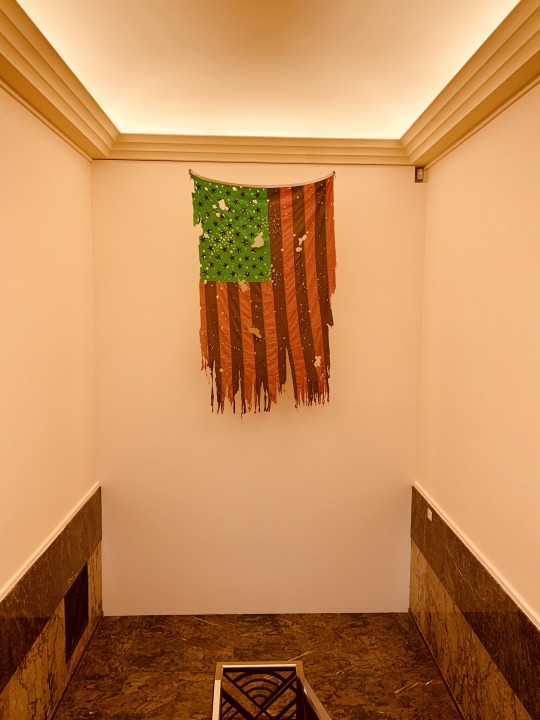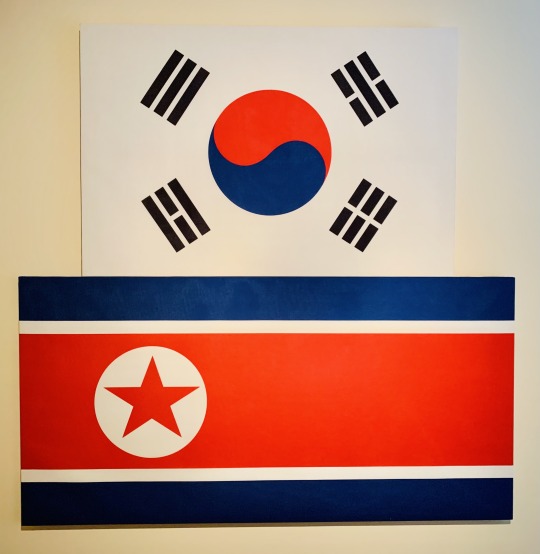#Gustave Wappers
Explore tagged Tumblr posts
Text
Kronkelweg naar de democratie: de lange negentiende eeuw in Nederland
De voor elke rechtgeaarde democraat uiterst irritante gang van zaken rond het in de afgelopen maanden aangetreden kabinet-Schoof – een onmachtig amalgaam van rechtsextremisten, landbouwlobbyisten, aanhangers van een min of meer wereldvreemde en nogal ziekelijke Constitutie-verbeteraar en levensmoede liberalen – maakt het politieke leven dezer dagen nogal tot een bezoeking. Er schuilt iets…

View On WordPress
#1795#1798#1813#1830#1848#1917#Abraham Kuyper#Alexander Gogel#Bataafse republiek#Beets#Belgische Opstand#Busken Huet#Camera Obscura#Da Costa#Delacroix#democratie#George Kockers#Groen van Prinsterer#Grondwet#Gustave Wappers#Hajo Spandaw#huiselijkheid#koning Willem I#Lodewijk Napoleon#Napoleon#Nationale Vergadering#Nederland#Negentiende eeuw#Niek van Sas#Oranje
0 notes
Text










Comparison of what Anne Boleyn wore at her execution to how it's depicted in art over the centuries.
Description is from John Guy & Julia Fox's Hunting the Falcon: Henry VIII, Anne Boleyn, and the Marriage That Shook Europe, 2023. The art is from an anonymous German artist (1695), Jan Luyken (1699), Pierre-Nolasque Bergeret (1800-25), Édouard Cibot (1835), and Gustav Wapper (1838), respectively.
#anne boleyn#henry viii#tudor period#tudor era#english history#women's history#art history#history#john guy#julia fox#hunting the falcon#jan luyken#pierre-nolasque bergeret#édouard cibot#gustav wapper#txt
355 notes
·
View notes
Text

Gustaf Wappers, Young Mother with Child
0 notes
Text






SIR LAWRENCE ALMA-TADEMA; "A FAVOURITE CUSTOM" 1909
This painting is set in the Stabian baths of Pompeii. In the foreground, one woman joyfully splashes another who is relaxing in the 'frigidarium', a cold pool. Some people assemble in a changing area further away. The artist created this piece using pictures of the bath remnants uncovered by archaeologists in 1824. He has enhanced their luxury with the addition of a marble floor and walls typically seen in grander imperial baths.
Around the beginning of the century, Alma-Tadema's color pallete grew brighter. He centered his attention on vibrant pink and purple shades in attire and blossoms, greens and ambers in accessories and decor, set against shining white marble. As depicted, the Stabian Bath symbolized a key element of Roman social life and culture. These baths represented the oldest public bathing facility in Pompeii, acting as a site for relaxation, social interaction, and exercise for all social classes.
At the age of 15, Alma-Tadema suffered a mental breakdown, causing him to abandon his training as a lawyer. While recovering, he started to teach himself how to draw and paint prior to pursuing formal art education at the age of 16. After being rejected from various Dutch art schools, he was eventually accepted to study at the Royal Academy of Fine Art in Antwerp, where he trained under Gustave Wappers. Later, in 1855, he worked in the studio of Louis De Taeye as an assistant. De Taeye encouraged him to explore classical subjects, stories, and art. He fostered an appreciation of historical costuming within his student – it was this training that would become the most influential in Alma-Tadema's artistic career.
The Chantrey Bequest greatly impacted the display of this painting by offering monetary assistance for obtaining exceptional artworks for public collections. Founded by sculptor Sir Francis Leggatt Chantrey, the fund sought to acquire works of "the highest merit" created in Britain, thus enriching the national art collection. This legacy enabled Tate Britain to acquire the painting in 1909, guaranteeing its conservation and availability to the public, in line with Chantrey's vision of promoting fine art for the nation.
89 notes
·
View notes
Text
Italian literature tournament - First round (start Monday 21 October - end Sunday 10 November).

Boccaccio reading from the Decameron to Queen Johanna of Naples, Gustave Wappers, 1849.
👉 There you go the official list with the pairs of the authors for the first round, all the combinations have been randomly created.
👉 Each pair has its link to the apposite poll to vote, that start to function when the poll start. Each poll have a duration of 1 week. In any case don't worry, each poll is tagged with the name of the author featured so you can find it also with the search bar.
👉 Every poll completed, the result will be posted in the same row - the winning author signed in bold.
Elio Vittorini - Gianni Rodari
Giacomo Leopardi - Carlo Levi
Beppe Fenoglio - Giovanni Boccaccio
Anna Banti - Giosuè Carducci
Elena Cassandra Tarabotti - Cletto Arrighi
Goffredo Parise - Antonio Fogazzaro
Matilde Serao - Ugo Foscolo
Sibilla Aleramo - Dante Alighieri
(Carlo) Fruttero & (Franco) Lucentini - Luigi Pulci
Francesco Petrarca - Gabriele D'Annunzio
Pietro Bembo - Jacopo Sannazaro
Giovanni Verga - Giambattista Basile
Pietro Metastasio - Primo Levi
Dino Buzzati - Alba de Céspedes
Pier Paolo Pasolini - Veronica Franco
Carlo Cassola - Salvator Quasimodo
Lalla Romano - Amelia Rosselli
Umberto Saba - Jacopone da Todi
Gaspara Stampa - Mario Rigoni Stern
Goliarda Sapienza - Luigi Capuana
Pier Vittorio Tondelli - Tullia d'Aragona
Cecco Angiolieri - Dario Fo
Carlo Emilio Gadda - Giuseppe Tomasi di Lampedusa
Federico de Roberto - Antonio Tabucchi
Vittoria Colonna - Alessandro Manzoni
Francesco Guicciardini - Giacomo/Jacopo da Lentini
Giorgio Scerbanenco - Pietro Aretino
Giovanni Meli - Igino Ugo Tarchetti
Giovan Battista Marino - Torquato Tasso
Giorgio Bassani - Angelo Poliziano
Giovanni Pascoli - Natalia Ginzburg
Matteo Bandello - Leonardo Sciascia
Giuseppe Parini - Luciano Bianciardi
Renata Viganò - Carlo Collodi
Eugenio Montale - Cesare Pavese
Anna Maria Ortese - Vittorio Alfieri
Italo Svevo - Umberto Eco
Matteo Maria Boiardo - Ludovico Ariosto
Cielo (Ciullo) d'Alcamo - Giuseppe Ungaretti
Guido Gozzano - Carlo Goldoni
Sebastiano Vassalli - Tommaso Landolfi
Edoardo De Filippo - Emilio Salgari
Giordano Bruno - Andrea Camilleri
Alberto Moravia - Alda Merini
Elsa Morante - Italo Calvino
Niccolò Machiavelli - Grazia Deledda
Carlo Gozzi - Guido Cavalcanti
Luigi Pirandello - Ennio Flaiano
61 notes
·
View notes
Text

At least one artist agrees: Vanni Boccaccio was a snack.
Boccaccio Reading the Decameron to Queen Joanna of Naples, by Baron Gustave Wappers (1849)
13 notes
·
View notes
Text
Gustave Wappers, Antoine Van Dyck courtisant sa modèle (1827)

"Je suis fouuu de vous", semble clamer Van Dyck dans ce tableau, à la façon d’un Michel Polnareff, en dardant sa modèle de ses yeux de daim énamouré. Il s’agit visiblement de l’épilogue d’une séance de pose, puisque le peintre semble avoir saisi la modèle en ayant encore ses pinceaux en main, et que la modèle donne l’air de renfiler ses savates. Comme de nombreuses œuvres de ce genre, celle-ci joue du contraste entre les sujets d’études matériels de l’artiste, à savoir la modèle, ses vêtements et les accessoires, et leur transfiguration sur la toile. Cette toile montre une Vierge-Marie, avec le voile bleu et la robe rouge de rigueur. La robe de la modèle est elle aussi rouge, mais c’est une robe de servante, et le voile bleu, un tissu riche qui ne saurait lui appartenir en propre, traîne dans un panier en osier. Un tissu descend de la taille de la modèle, qui a les contours d’un drapé comme les peintures classiques en regorgent et sert la composition, mais qui n’est en fait qu’un tablier. L’ensemble de la scène est bien sûr une énième variation sur les relations amoureuses supposées entre artistes et modèles, avec beaucoup d’eau de rose. On ne peut s’empêcher de remarquer à quel point l’atelier de Van Dyck est décrit comme intimiste et plus que modeste, fidèle aux clichés du genre, alors même que Van Dyck était un artiste à succès, décoré par le roi d’Angleterre, et dont l’atelier était forcément vibrillonnant d’assistants que le maître dirigeait en chef d’entreprise.
#van dyck#painting#beaux-arts#fine arts#histoire des modèles vivants#life modelling#histoire de l’art#peinture
0 notes
Text

Portrait of the Belgian Queen Louise-Marie by Gustave Wappers and Eugéne Verboeckhoven, c. 1837-1840
#Eugene Verboeckhoven#19th c. belgium#belgium#queen of belgium#1830s#riding#riding habit#gustave wappers#19th century#mdp19th c.
84 notes
·
View notes
Photo

Gustave Wappers - Episode of the September Days 1830 (1835)
10 notes
·
View notes
Text

Anne Boleyn Says a Final Goodbye to her Daughter, Princess Elizabeth by Gustav Wappers (1838)
#Art#Victorian Art#Anne Boleyn#Elizabeth I#Anne and Elizabeth#Anne Boleyn Remembered#Anne Boleyn Says a Final Goodbye to Her Daughter Princess Elizabeth#Gustav Wappers#Anne Boleyn Art#Elizabeth I Art#Anne and Elizabeth Art#1838
3 notes
·
View notes
Photo









Villa Empain: FLAGS Kunstenaars Marina Abramovic, Saâdane Afif, Gordana Andjelic-Galic, Diane Arbus, Micha Bar-Am, Bruno Barbey, Nú Barreto, Pierre Bismuth, Alighiero Boetti, Marcel Broodthaers, Zoulikha Bouabdellah, Daniel Buren, René Burri, Mircea Cantor, Léon Cogniet, Roger de La Fresnaye, Wim Delvoye, Edith Dekyndt, Gustave de Smet, Raoul Dufy, Mounir Fatmi, Michel François, Stuart Franklin, Gérard Fromanger, John Gerrard, Gilbert & George, David Hammons, Keith Haring, Childe Hassam, Thomas Hoepker, Jonathan Horowitz, Jasper Johns, Nikita Kadan, Evgueni Khaldeï, Kimsooja, Robert Longo, George Maciunias, Peter Marlow, Susan Meiselas, Jonathan Monk, Adolphe Mouilleron, Claes Oldenburg, Martin Parr, Peybak, Pablo Picasso, Sara Rahbar, Jean-Pierre Raynaud, Marc Riboud, Faith Ringgold, Joe Rosenthal, Yara Said, Franck Scurti, Thomas Schütte, Andres Serrano, Sturtevant, Rirkrit Tiravanija, Larry Towell, Danh Vo, Gustave Wappers, Andy Warhol.
1 note
·
View note
Text

As I set out in search of an image to commemorate the first day of September, Episodes from September Days demanded my full attention.
Even at first glance, Gustave Wapper's striking 1830 oil on canvas encapsulates perfectly my mood today: the oppressive mood of a humid summer clashing with the onset of darker days. A tumult of bodies, streaming into the foreground of life all at once after weeks of humble solitude and rest. Beauty in violence. The unease of what will remain once the streets are cleared and the darkness of autumn edges closer...
The year 1930 was marked by revolutionary fervour. Paris went through the July Revolution, which marked the end of the rule of Charles X. Delacroix painted Liberty Leading the People. Brussels, for its part, had its September Days, which ended Dutch rule over the Southern Provinces, imposed at the 1815 Congress of Vienna. Wappers created his Episode of the September Days 1830... in 1835. Commissioned by the new government of Belgium, this work was a monumental and jubilatory manifesto, exalting the recent revolution and the newly found independence of the young nation.
In a pyramidal composition, the work provides a synthesis of events of the revolution and its actors, stressing the promulgation of the proclamation Aux Citoyens de Bruxelles... ('To The Citizens of Brussels'), signed on 24 September by the Administrative Commission, which represented the Belgian authorities at the heart of the unrest.
Wappers triggered the Belgian Romantic movement, which wanted to break with Neoclassicism and pick up with the pictorial eloquence of a Rubens. Wappers revived history painting and stamped it with a national character.
#september#September days#art history#paintings#dark academia#autumn#moodboard#Wappers#Revolution#classic art#light academia
2 notes
·
View notes
Photo

Gustave Wappers (Belgian, 1803–1874). The Shulammite (1870).
19 notes
·
View notes
Photo

Louis XVII in the Temple by Egide Charles Gustave Wappers, circa 1823-1860. This version is in the collection of the Amsterdam Museum.
78 notes
·
View notes
Photo

Anthony van Dyck in Love with his Model by Gustave Wappers, 1827, Museum of the Netherlands
In zijn atelier knielt de schilder Anthonie van Dijck verliefd voor zijn model. Links het schilderij waar de vrouw voor poseert, rechts een tafel met een kruik, kaas en een bord.
90 notes
·
View notes
